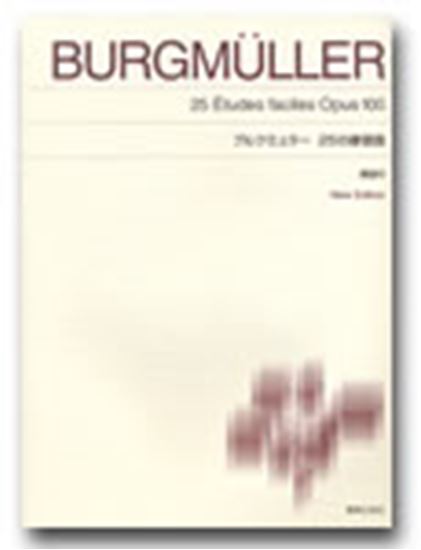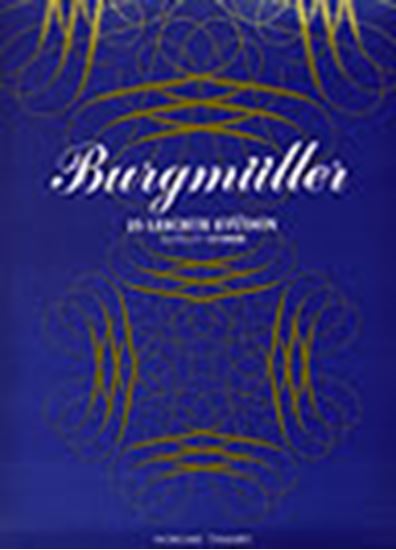Burgmüller, Johann Friedrich Franz : 25 Etudes faciles et progressives, conposées et doigtées expressément pour l'étendue des petites mains La Babillarde Op.100-17
Work Overview
Genre:etude
Total Playing Time:1 min 00 sec
Copyright:Public Domain
Commentary (3)
Author : Sato, Takashi
Last Updated: January 31, 2022
[Open]
Author : Sato, Takashi
A boisterous person who utters words one after another like a machine gun is humorously depicted through repeated notes. Many may be reminded of "Limoges, the Market" from Mussorgsky's Pictures at an Exhibition.
Although it is composed almost entirely of diatonic chords, the nuance of the double dominant in measures 13 and 28 shines through.
Performance Points (Original Tempo ♩.=72)
- The iron rule for repeated notes with finger changes is to focus more on "lowering" the finger than on "raising" it.
- For the right hand from measure 7, repeat the notes by slightly lowering the wrist and applying weight, releasing on the first beat of the next measure. However, for the left hand's repeated notes from measure 15, play lightly without lowering the wrist.
- The first beat of measures 8 and 9 marks the end of a phrase, whereas the first beat of measure 10 marks the beginning (or middle), so the sense of musical progression differs.
- The same applies to the four measures from measure 11.
(From To-on Edition "Burgmüller 25 Etudes" (NS70))
Author : Iida, Arisa
Last Updated: March 15, 2018
[Open]
Author : Iida, Arisa
Musical example provided by: Ongaku no Tomo Sha
Author : Ooi, Kazurou
Last Updated: May 10, 2019
[Open]
Author : Ooi, Kazurou
This piece's tempo marking is indicated as dotted quarter note = 72 in the Zen-On edition. When the author played it, the tempo was dotted quarter note = 86. While 86 presents various technical problems, even at 72, one can discern technically challenging sections. These are found in the repeated notes of the left hand in measures 15-18.
In each measure, the first beat, the downbeat, is a C an octave lower, so I believe that the fingering 512121, as indicated in this Zen-On edition, is the most suitable. The author considered various options but ultimately arrived at this fingering.
For rhythm practice, select two notes (C and C), move quickly from finger 1 to 2, and once finger 2 lands on C, hold it there for 1-2 seconds. At that time, place an accent on finger 2 and play it quite strongly. Finger 1, like playing an ornament, should not apply force. This 1-to-2 practice will be effective. The speed from 1 to 2 at this time should be faster than the actual playing speed of dotted quarter note = 72. Repeat this exercise.
Therefore, finger 2, at least during practice, must maintain a bridge-like shape at both the first and second joints.
Additionally, for the right-hand repeated notes, which depict a lively, chattering atmosphere, practice them as 2-1, then 3-2, and finally 3-2-1.
The key to this piece is to make these right-hand and left-hand repeated notes sound light and effortless to the listener.
Arrangements & Related Works(3)
PTNA & Partner Channel Videos(18items) View More
Sheet MusicView More
Scores List (25)

(株)東音企画(バスティン)

(株)東音企画(バスティン)

(株)東音企画(バスティン)

(株)エー・ティ・エヌ

(株)全音楽譜出版社

(株)ドレミ楽譜出版社

(株)音楽之友社

KMP(ケイ・エム・ピー) ケイエムピー

(株)ドレミ楽譜出版社

ハンナ(ショパン)

(株)ヤマハミュージックエンタテインメントホールディングス

デプロMP

(株)ドレミ楽譜出版社

(株)全音楽譜出版社

(株)ドレミ楽譜出版社

カワイ出版

カワイ出版

デプロMP

(株)ヤマハミュージックエンタテインメントホールディングス

デプロMP

(株)音楽之友社

(株)共同音楽出版社

Neil A. Kjos Music Company



















